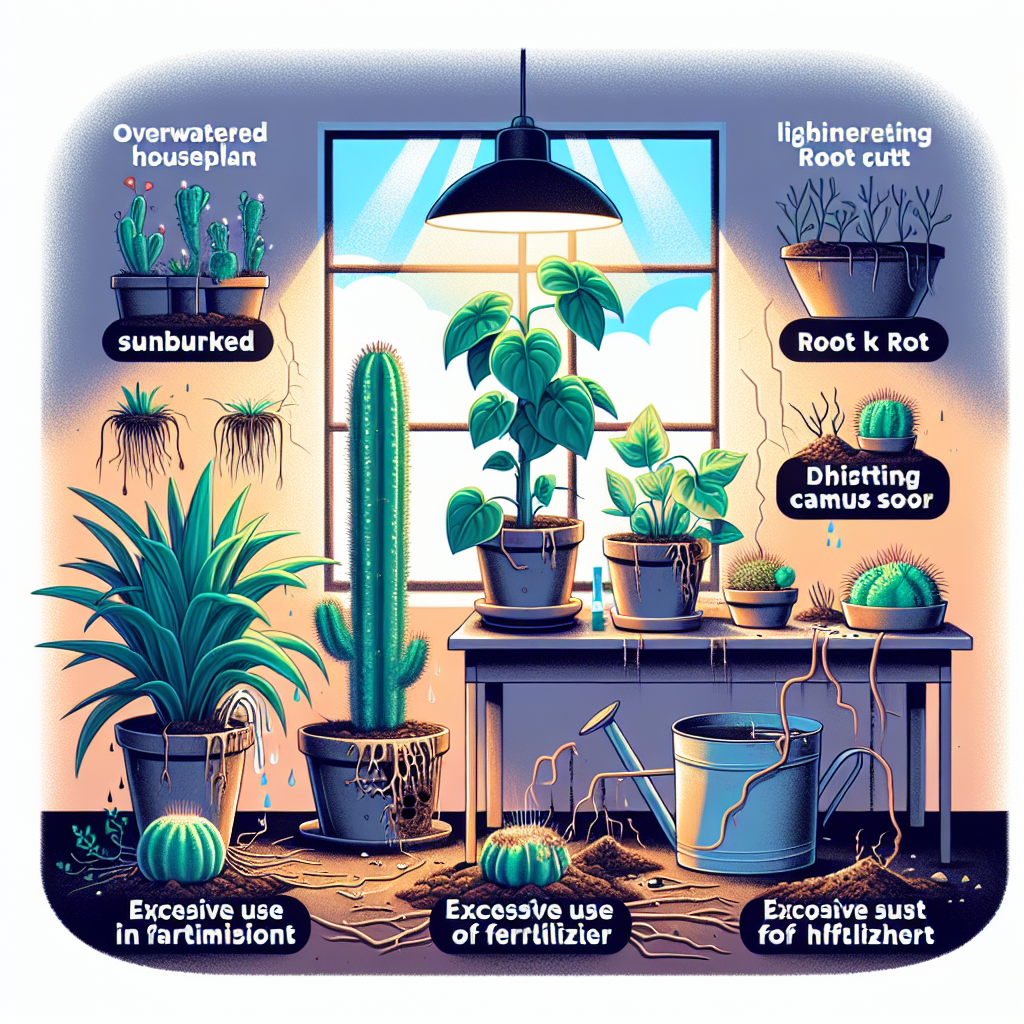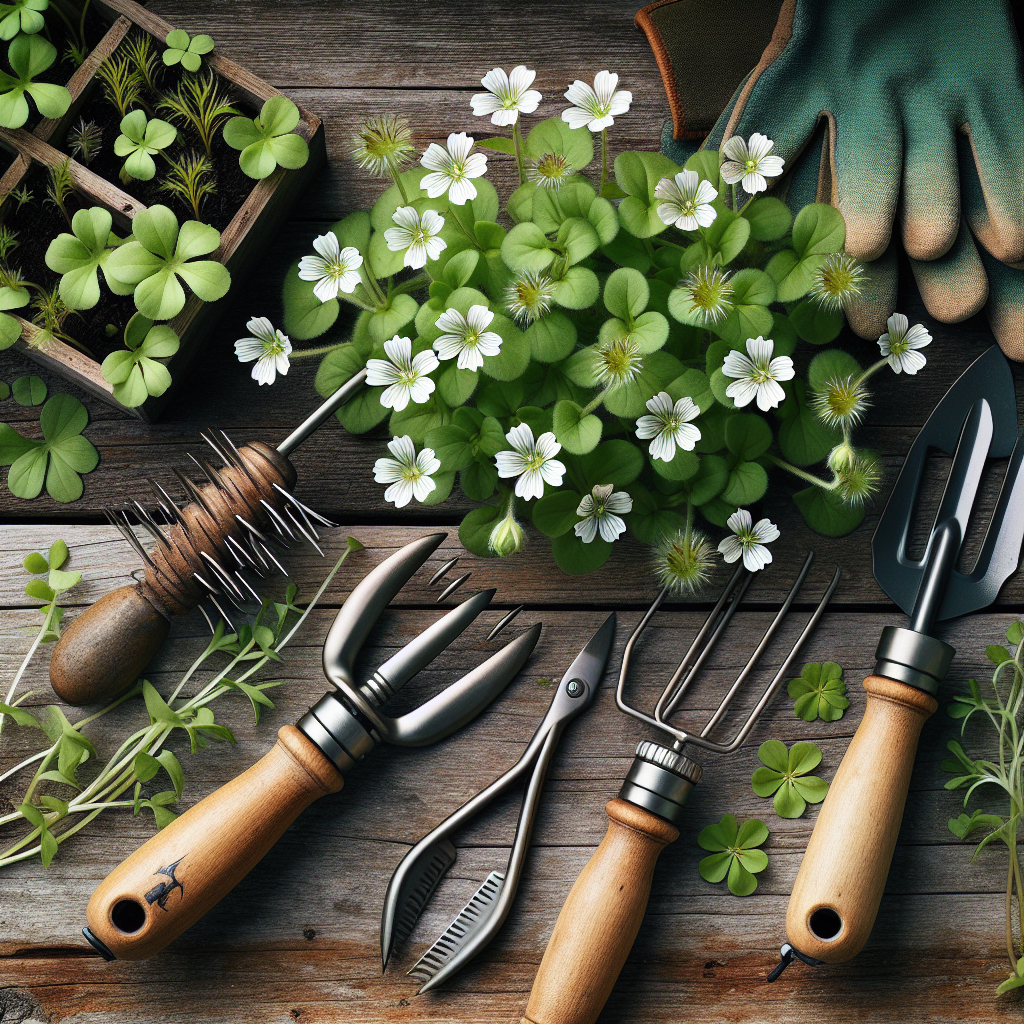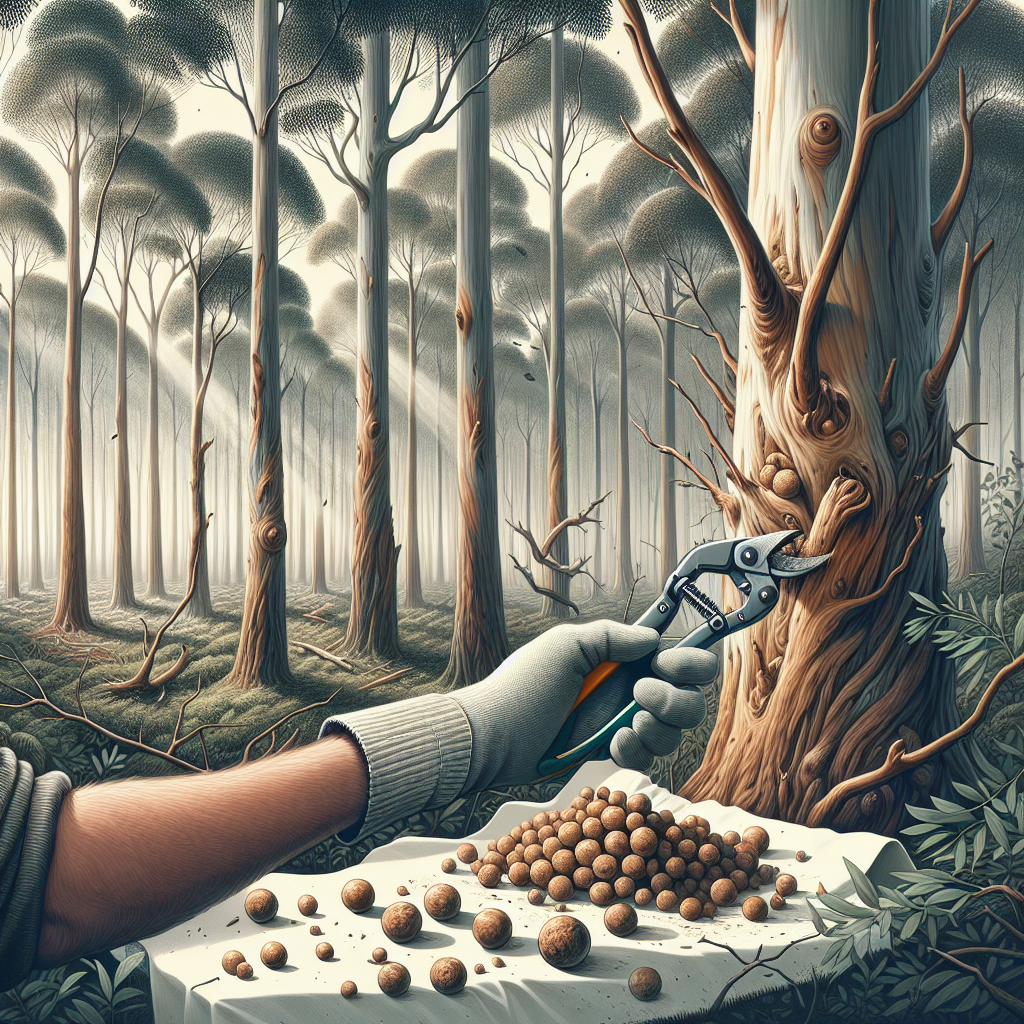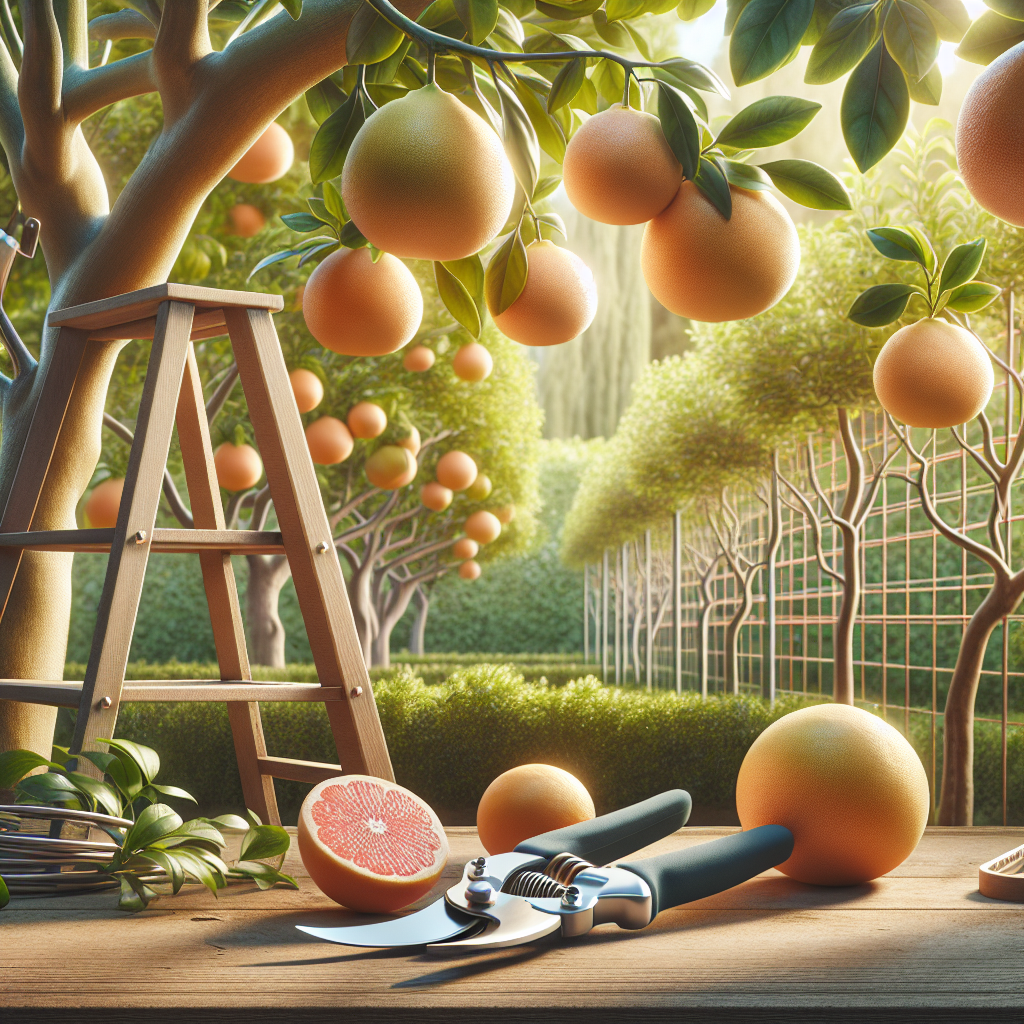Avoiding Common Mistakes in Indoor Gardening
Updated June 27, 2024 at 10:21 am

Understanding Your Indoor Garden
Creating a thriving indoor garden requires understanding the specific needs of each plant. To facilitate a better grasp on this, here’s a quick overview of some key factors:
- Pet Friendly
When selecting plants, consider non-toxic options that ensure the safety of your furry friends. For example, Spider Plants are a popular choice that’s non-toxic to cats and dogs. - Light Requirements
Plants like the Snake Plant are versatile, tolerating low light but thriving in indirect sunlight, making them ideal for various indoor conditions. - Watering
Overwatering is a common issue. A peace lily could indicate when it’s thirsty, with its drooping leaves prompting you to water – perfect for beginners. - Humidity
Tropical plants, such as the majestic Monstera, require higher humidity levels to replicate their natural habitat, often necessitating a humidifier. - Temperature
Consistency is key; plants like the Pothos enjoy a steady temperature without drastic fluctuations, typically preferring room temperature. - Difficulty
Succulents, like the resilient Zebra Plant, are an excellent choice for those new to indoor gardening due to their minimal care requirements.
Selecting the Right Soil and Fertilizer
One might wonder, “What soil should I use for my indoor plants?” The answer varies, but a well-draining, nutrient-rich mix is often a safe bet. The FoxFarm Ocean Forest Potting Soil is a top choice for many indoor gardeners. This soil is a blend of earthworm castings, bat guano, and sea-going fish meal, offering a rich foundation for plant growth. Reviews often highlight its balance of aeration and moisture retention, crucial for the health of your indoor plant baby.
When it comes to fertilizing, a well-received option is the Osmocote Smart-Release Plant Food. Its unique formula provides a steady supply of nutrients, and the non-burning granules ensure your plants aren’t damaged by excess application. Users commend its effectiveness for promoting lush, vibrant growth in a variety of indoor plants.
Find This and More on Amazon
Diagnosing Plant Issues
What if the leaves on your plant start to yellow or brown? Don’t panic just yet. It’s said that people often encounter this problem due to either overwatering or underwatering. A moisture meter like the XLUX Soil Moisture Meter can help you check whether your watering routine requires adjustment. It’s described as a simple yet highly effective tool for ensuring your plants get just the right amount of water.
Find This and More on Amazon
Trimming and Pruning: Essentials for Growth
Keeping your plant pruned is not only about aesthetics; it is crucial for avoiding overgrowth and encouraging healthier foliage. Wondering how often and what techniques to use? A comfortable, sharp pair of pruning shears is your ally here. Reviews of the Fiskars Steel Pruning Shears often highlight their durability and precision, making them perfect for making clean cuts without harming your plants.
Find This and More on Amazon
Maximizing Light Exposure
Proper light exposure is vital, and a common question is “How do I ensure my plants get enough light?” If natural light is limited, consider a grow light like the Roleadro LED Grow Light. This particular model emits a full spectrum of light, simulating natural sunlight to support photosynthesis all year round. Users often praise its energy efficiency and the boost it provides to indoor plant growth.
Climate Control in Indoor Gardening
Maintaining the right temperature and humidity levels can be a bit tricky, especially for tropical plants. If you’re looking to keep your delicate ferns or orchids happy, a digital thermometer/hygrometer like the ThermoPro TP50 can be invaluable. It’s acclaimed for its accuracy and the convenience of its digital readout, which helps gardeners adjust their room’s environment to the perfect conditions.
Effective Watering Practices
Watering may seem straightforward, but it’s often the downfall of many indoor gardens. “How much water does my plant really need?” A common misconception is that more water promotes faster growth, when in fact, it often leads to root rot and other issues. It’s essential to understand that each plant has unique needs. Take, for instance, the ZZ Plant, which thrives on neglect and requires minimal watering. By contrast, a Boston Fern needs a consistently moist soil without being waterlogged.
To help regulate your watering schedule, products such as the Lechuza self-watering planter have gathered positive remarks for their sub-irrigation system, which waters plants gradually and extends the time between watering. This can be especially handy if you sometimes forget to water or tend to overwater your plants.
Find This and More on Amazon
Preventing and Treating Pest Infestations
It might be disheartening to find pests on your beloved indoor plants. If you’re asking, “How can I protect my indoor garden from pests?” regular inspection is key. Keep an eye out for the telltale signs of infestation such as sticky leaves, holes, or a fine webbing. Neem oil, like the Organic Neem Bliss 100% Pure Cold Pressed Neem Seed Oil, is highly recommended for its natural pest-repellent properties. Many organic gardening enthusiasts swear by its effectiveness against common pests such as aphids, spider mites, and whiteflies, all while being safe for most beneficial insects.
Regulating Growth and Space Management
As your indoor garden flourishes, managing plant growth becomes important. “What should I do when my plant becomes too big?” Repotting is one solution, and it often provides an opportunity to give your plants fresh soil and more room to grow. However, it’s crucial to select the right size pot. Upsizing too much can overwhelm your plant and lead to excess soil moisture issues. The opposite is true as well – a pot that’s too small can restrict root growth and hinder the plant’s development.
Ideal pot choices include the classic Terracotta pots, which are excellent for their breathability and wicking excess moisture away from the soil. Alternatively, the Mkono Plastic Planters are touted for their durability and modern design, combining aesthetics with functionality. They come in various sizes, meaning you can find the perfect fit for your growing plant.
Beneficial Additions to Boost Plant Health
Apart from the basics, there are a few extras that can elevate the health of your indoor garden. “Is there something extra I can do for my plants’ well-being?” One suggestion is incorporating beneficial insects, such as ladybugs, to naturally control pest populations. Besides, a touch of worm castings added to your potting mix can enrich the soil with beneficial nutrients and microbes, potentially enhancing plant resistance to disease and improving growth.
Houseplant enthusiasts often sing the praises of products like Worm Gold Plus Pure Worm Castings, noting its odorless, organic nature and how it helps in producing vigorous plant growth without the risk of burning delicate roots.
Find This and More on Amazon
Understanding Indoor Plant Life Cycles
Recognizing the life cycle of your indoor plants helps in caring for them appropriately. “Why is my plant dropping leaves even though I’m taking good care of it?” Many times, foliage drop is simply part of a plant’s natural cycle, especially as seasons change. For instance, some species naturally shed leaves to conserve energy during the less sunny winter months. Understanding these patterns can help prevent unnecessary worry and overcompensation in plant care.
Creating a Personal Connection with Your Plants
Lastly, developing a bond with your indoor plants can make the experience much more rewarding. Speaking to your plants, keeping track of their growth, and even giving them names can turn indoor gardening into a personal and joyous journey. “How can I make this more than just a hobby?” It’s the personal touch, the stories of each plant, and the attentiveness to their quirks that transform routine plant care into a nurturing relationship and, for many, a passionate hobby. Celebrate the new leaves, the blooms, and even the learning experiences from gardening mishaps – each one is a step towards becoming a seasoned indoor gardener.
Final Thoughts on Indoor Gardening
Embarking on the journey of indoor gardening can be incredibly fulfilling. By avoiding common mistakes and arming yourself with knowledge and the right tools, you can create a green oasis in your home. Remember, every plant is unique, and part of the fun is learning and growing alongside your leafy companions. Pay attention to their needs, be patient, and don’t forget to enjoy every moment of the process. Happy gardening!
Understanding Water Quality and Nutrients
Have you considered that the water you use might be impacting your indoor garden? “Can the type of water I use affect my plants?” Absolutely. Tap water, especially in certain areas, can contain chlorine and hard minerals that some plants might be sensitive to. If you’ve noticed issues and you’re suspecting the water, it might be worth using filtered or distilled water for a while, to see if there’s an improvement.
Nutrition-wise, you might be familiar with NPK on fertilizer labels, which stands for nitrogen, phosphorus, and potassium. Each element serves a different purpose, and it’s essential to offer a balanced feed. Indoor plant fertilizers, such as Miracle-Gro Indoor Plant Food, are specially formulated to deliver just the right balance of these nutrients. Gardeners frequently mention how this product helps in maintaining healthy growth without the risk of nutrient burn that more concentrated fertilizers might cause.
Find This and More on Amazon
Designing Your Indoor Garden for Aesthetics and Well-being
An indoor garden isn’t just about the health of your plants; it’s also about enhancing your living space. “How can I make my indoor garden a centerpiece in my home?” Positioning plants at different levels and incorporating various textures and colors can create a dynamic and inviting environment. Consider chic plant stands and hangers to utilize vertical space. Brands like Mkono and Costa Farms offer stylish planters and stands that not only hold your plants but also contribute to the decor of your room.
Seasonal Adjustments for Indoor Gardening
You might not be subject to the whims of outdoor weather, but indoor gardens are still affected by the seasons. “How do I adjust my plant care with the changing seasons?” During the winter, you may need to move plants closer to light sources and possibly dial back on watering. Conversely, in the summer, your plants might benefit from increased humidity and more frequent watering or misting to prevent them from drying out.
Tips on Personalizing Your Indoor Gardening Experience
Indoor gardening is a personal venture, and there’s no one-size-fits-all approach. “What can I do to personalize my indoor gardening?” Keep a garden journal to track your plants’ progress and tailor care routines to the individual needs of each plant. Additionally, you might enjoy experimenting with hydroponics or propagation, which can be a fun way to expand your garden and your gardening knowledge.
Resources and Community Support
Finally, you don’t have to garden in isolation. “Where can I turn to for advice and inspiration?” There’s an incredible community of indoor gardeners out there. Online forums, local gardening clubs, and social media groups can offer support, swap cuttings, and share experiences. Engaging with the community can provide a wealth of information and inspiration for both novices and experienced gardeners alike.
Embarking on the journey of indoor gardening can be incredibly fulfilling. By avoiding common mistakes and arming yourself with knowledge and the right tools, you can create a green oasis in your home. Remember, every plant is unique, and part of the fun is learning and growing alongside your leafy companions. Pay attention to their needs, be patient, and don’t forget to enjoy every moment of the process. Happy gardening!
Shop more on Amazon

